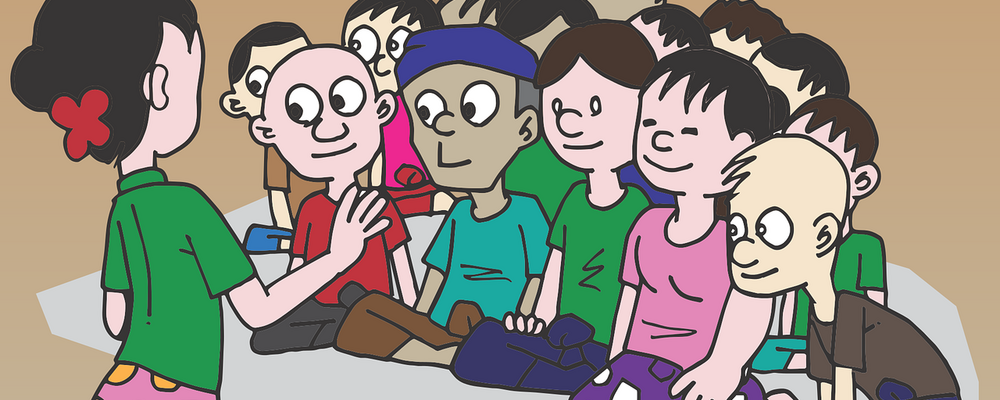
Promoting mental health in childhood through gender diversity awareness
Ines Sousa's latest blog entry
[Posted on 17 October, 2017 by Inês Sousa]
The Portuguese parliament has recently passed a new law on gender identity, under which the rights of gender non-conforming children are protected. Children can, at school, choose another first name and gender, without the need of a medical diagnosis. Classes on gender diversity and expression are included in school programs for different ages.
Gender non-conformity as the result of biological determinism
In Canada, in 2014, suicide among gender non-conforming teenagers was identified as a serious health concern. Vancouver was the first city to change gender related policies in schools: gender and first name became optional for every child. A third, neutral, toilet category has been added.
The subject received increased attention from the media in 2015 when in the USA, Caitlyn Jenner, a TV celebrity, revealed she was a trans woman. Other celebrities, such as Angelina Jolie, Brad Pitt and Adele, have shown an open position about their children’s cross gender expression. Following this, paediatricians around America reported an increased rate of newly recognised cases of gender non-conforming children in their clinics.
The National Geographic earlier this year carried a cover photo of a nine-year-old transgender girl, who claimed that: “The best thing about being a girl is, now I don’t have to pretend to be a boy.”
A great step has been taken, as public opinion finally recognises gender identity as the result of biological determinism rather than of education and sociopsychology. This is an invaluable cultural acquisition that can save lives of children and adolescents and prevent persecution of innocent parents and transgender adults all around the world. A cultural revolution is taking place, where it is no longer acceptable to make jokes about gender variance (as was the case not so long ago in beloved mainstream sitcoms such as Friends, in the 90’s).
Gender non-conformity is a dynamic state in childhood
However, even between people who are fully aware of the biological determinism of gender non-conformity, the subject has not been without extensive debate. Gender identity is a dynamic state in childhood. Presently, it is not yet possible to predict which children will persist in their gender non-conformity once they grow older. Paediatric associations have criticised the National Geographic Magazine issue, because it could encourage a gender transition in an early age. As a matter of fact, 75% of children have been reported to grow out of their gender dysphoria, as they go through puberty. As such, they fear that an early transition can make it difficult for the teenager to transition again. More than this, an early hormonal intervention, prior to adulthood, intended to block puberty, is sometimes used in gender non-conforming teenagers. These treatments can indeed change the transforming effect that puberty could have in the brain, and the perception of gender, and thus be deleterious.
In my opinion, there are two essential questions related to the approach of gender non-conformity in childhood. One is to know whether a child has the right to publicly express the gender she/he is identifying with. The other question is a more biological one: at what age is it extremely likely that gender non-conformity stays as a permanent trait? Only in such cases should medical treatment be considered, if desired by the teenager him/herself. Unlike American law, Portuguese law only allows this in late adolescence. This type of approach has to be accompanied by psychological and physical assessment, as the treatments are in many ways irreversible.
Gender dysphoria indicates that a completely binary construction of gender may not provide a full picture
As much as autism, to an extent, is debatable as a diagnosis, experts debate whether gender dysphoria is a “proper” diagnosis. It is proposed to be rather an appropriate reaction to a perception of self that doesn’t match the gender assignment. The expression characterises the intense suffering of gender non-conforming children.
Sweden and other Scandinavian countries have taken the lead in reducing cultural gender biases. In schools changes in conventional play roles are promoted: girls are encouraged to play soccer; boys are given toy dolls and kitchenware. An extended parental leave is given for both parents equally.
Dissociating culture from behaviour and thoroughly examining gender mean accepting that individuals can have different levels of either gender in their temperament; equivalent value has to be attributed to both femininity and masculinity.
In September 2017, John Lewis London fashion brand claimed to be the first one to remove ‘boys’ and ‘girls’ labels from children’s clothes. The reaction from customers was not entirely positive. However, this removes pressure from children to express themselves in a firmly established way, which should be seen as a good measure to accommodate the presence of gender non-conformity in our society.
- In order to have a full idea of homophobia in Friends you can watch the Youtube movie by the video editor Tijana Mamula: https://www.youtube.com/watch?v=SsQ5za-J6I8
- Vancouver school board approves new policy addressing transgender students: http://www.vancouversun.com/life/Vancouver+school+board+approves+policy+addressing+transgender+students/9945194/story.html
- Portuguese government proposes new law on gender identity
and
- Portuguese Parents association for LGBT rights: http://www.amplos.pt/
- John Lewis removes ‘boys’ and ‘girls’ labels from children’s clothes
http://www.telegraph.co.uk/news/2017/09/02/john-lewis-removes-boys-girls-labels-childrens-clothes/
[This is a blog. The purpose of the blog is to provide information and raise awareness concerning important issues. All views and opinions expressed are those of the writer and not necessarily shared by the GNC.]